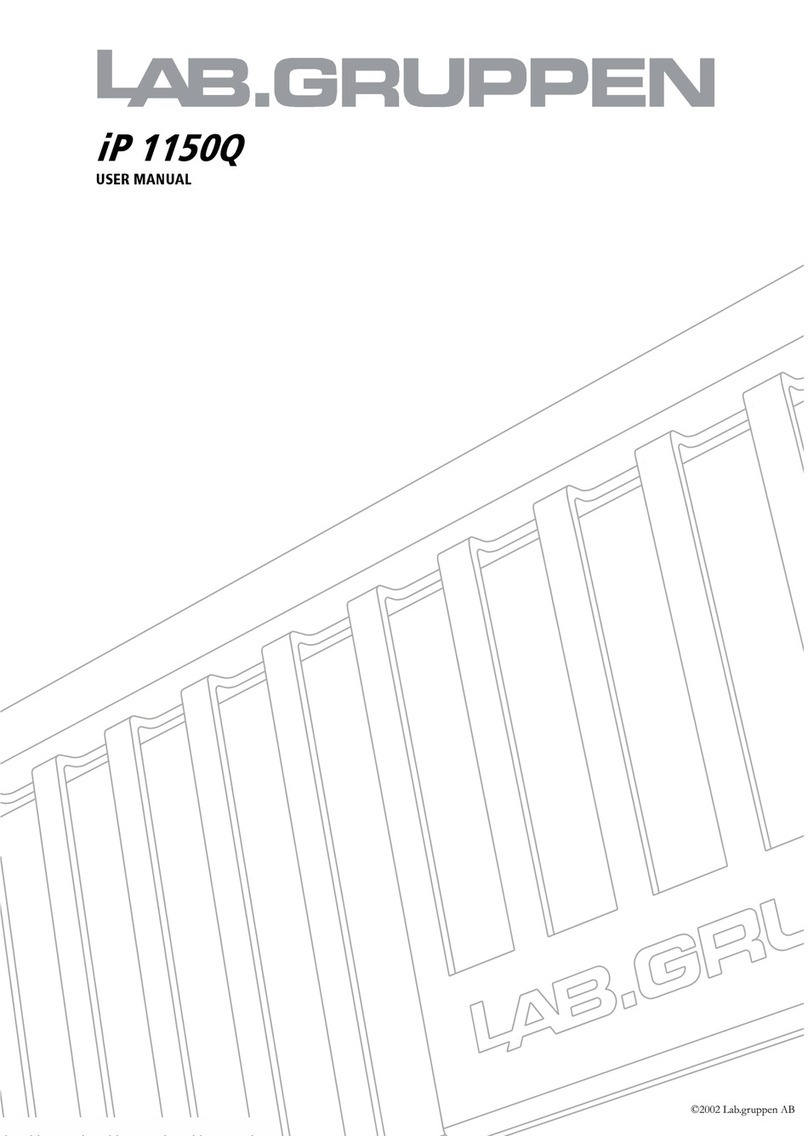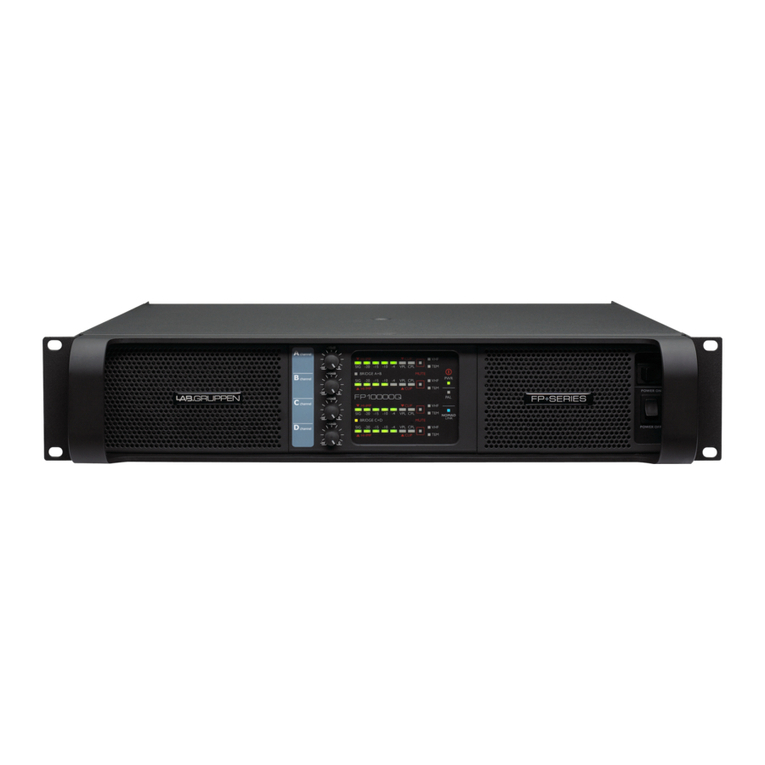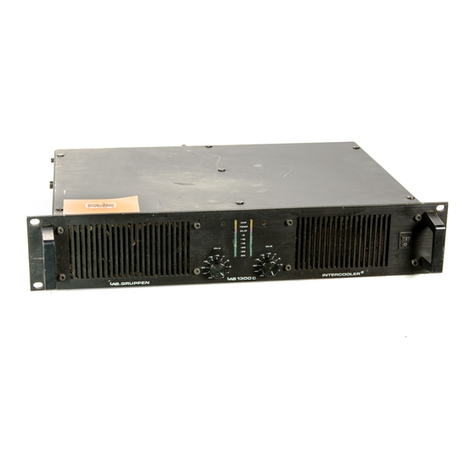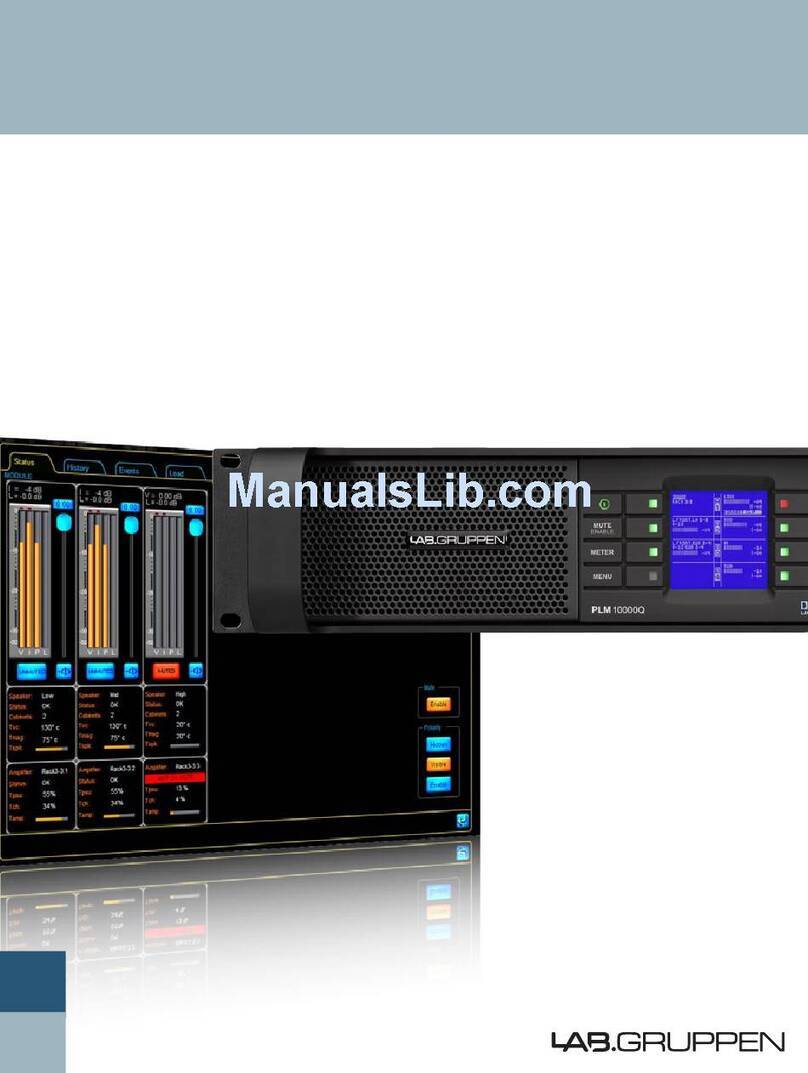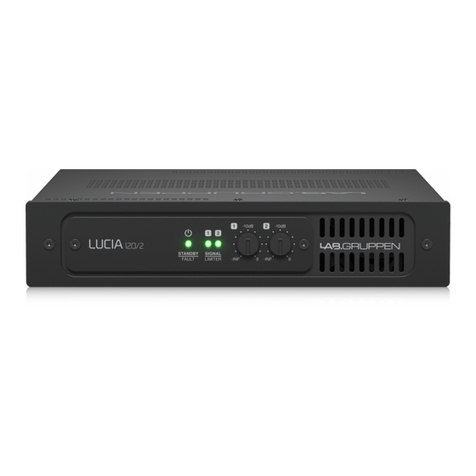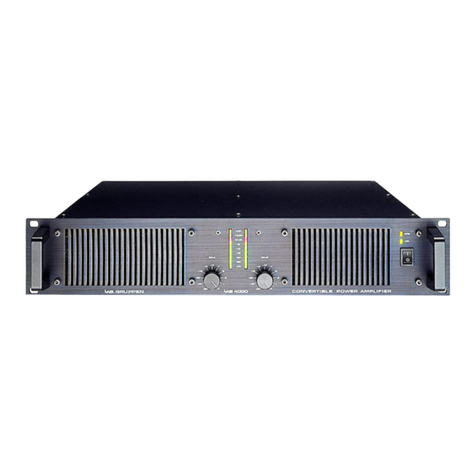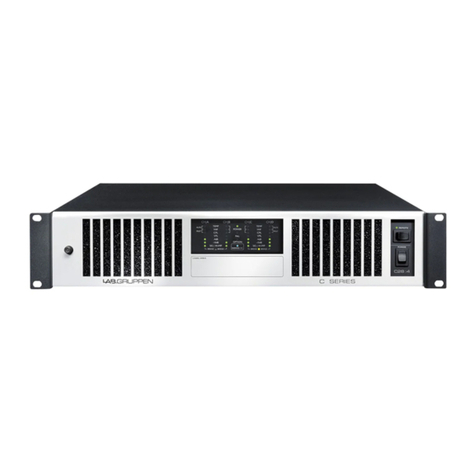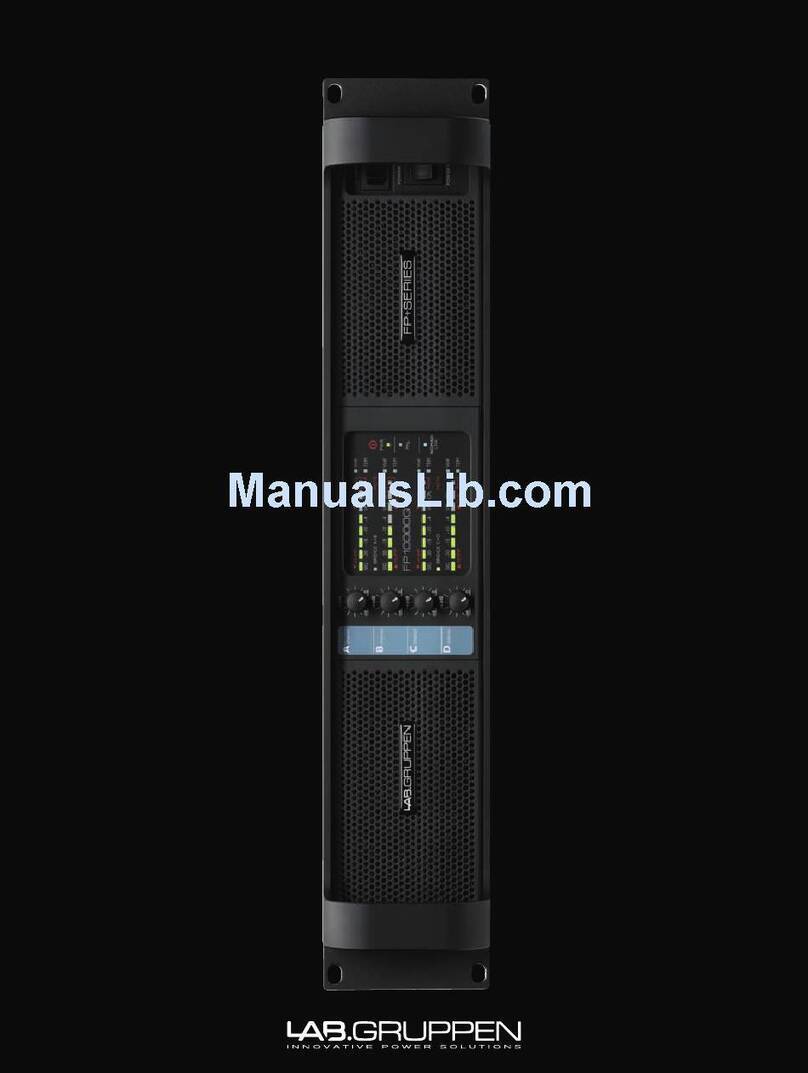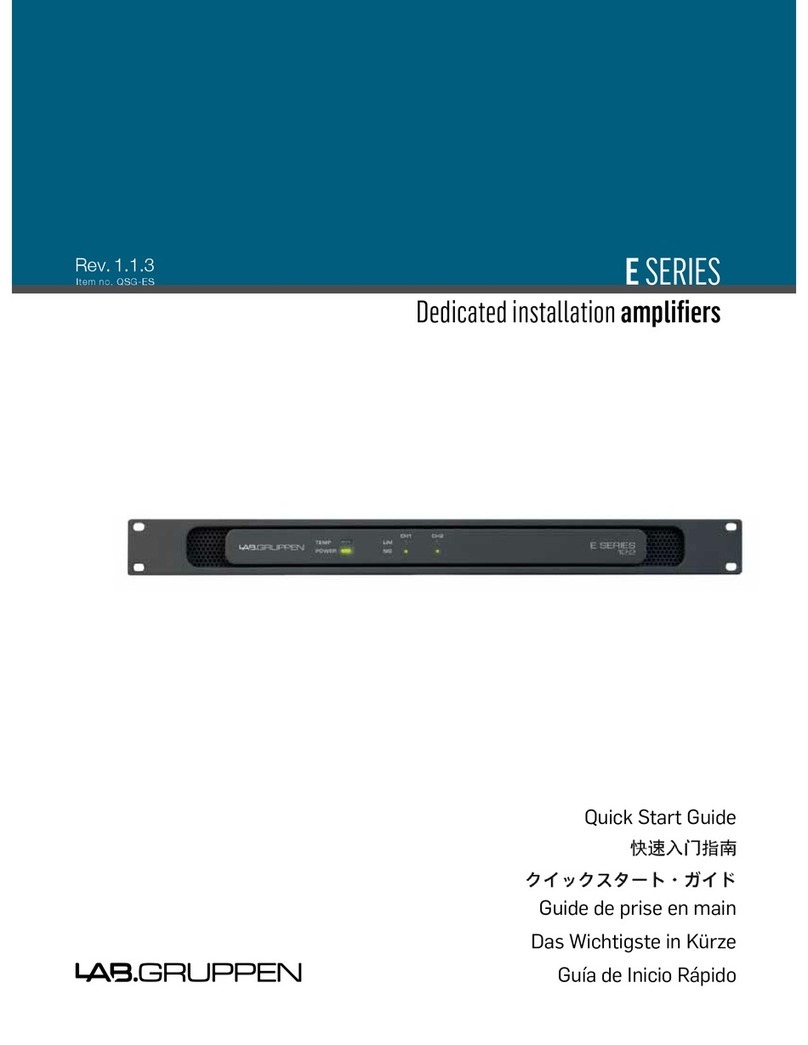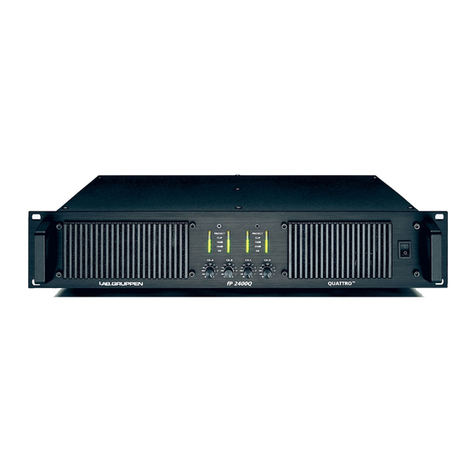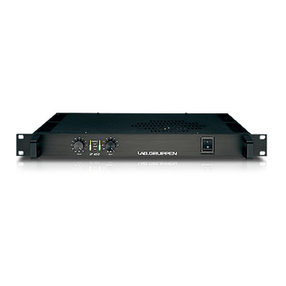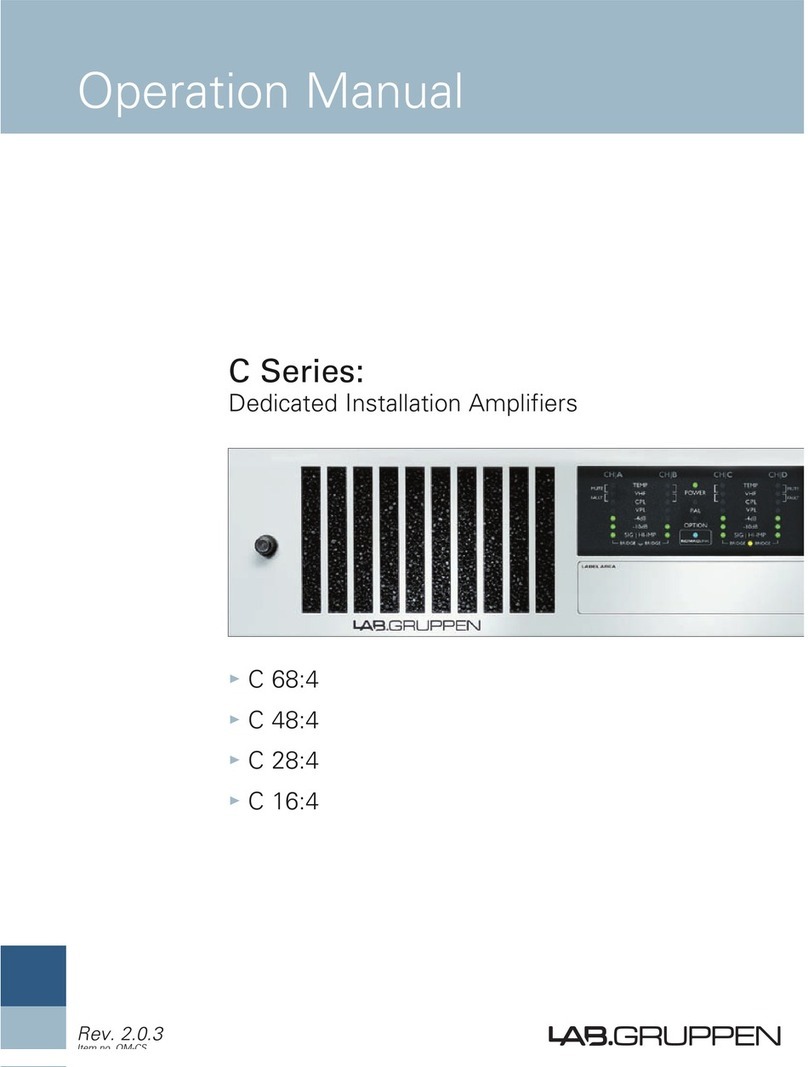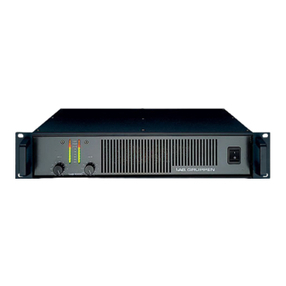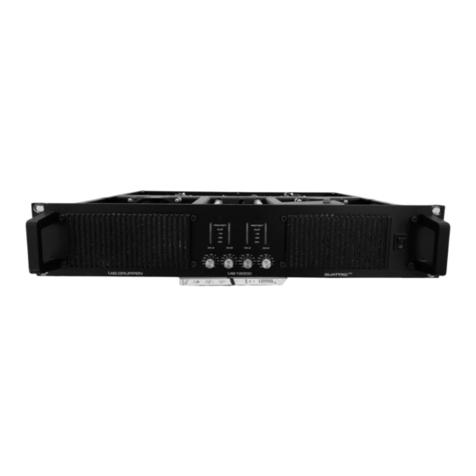Technology Brief:
Class TD, Regulated SMPS, and Intercooler®
C Series: Installation-Dedicated Amplifiers
The Lab.gruppen C Series sets a new benchmark for power density
in commercial audio amplifiers. The flagship C 68:4 produces up to
6800 W of total output (4 x 1700 W @ 4 ohms) in a 2U cabinet weigh-
ing about 12 kg (26.4 lbs). Despite the prodigious power produced
inside an astonishingly compact package, C Series amplifiers will not
overheat under normal use conditions. By keeping cool, they provide
many years of reliable service – with state-of the-art sonic perfor-
mance – in all types of installed sound applications.
To achieve this extraordinary combination of power den-
sity, performance and reliability, Lab.gruppen engineers ap-
plied the world’s most advanced amplifier technologies – many
patented or proprietary – in development of the C Series.
Class TD Design
Technology: For decades, the class AB output stage set the
standard for high audio quality in power amplification. Although Class
AB amplifiers are known for excellent sound, they do not use power
efficiently. A great deal of heat is dissipated by the output stages,
requiring large heat sinks and bulky fans to keep the output transis-
tors inside safe temperatures. Larger power supplies are needed to
produce power eventually dissipated as heat.
Two other familiar approaches to power amplification offer improved
efficiency, though each comes with drawbacks. Class D switching
amplifiers employ pulse width modulation (PWM) techniques to
achieve very high efficiency, but most implementations of “pure”
class D involve compromises in sound quality. Class H designs boost
efficiency by modulating the power supply voltage with the input
signal, “tracking” the input in order to provide the instantaneous
voltage needed for optimum operation of the output devices.
However, maximum efficiency with class H is achieved only within a
relatively limited dynamic range.
The fundamental concepts behind both class D and class H
amplifiers have been in the literature for decades, and are not
covered by patents. However, specific circuits implement-
ing these concepts can be patented, as is the case with
Lab.gruppen’s breakthrough Class TD amplifier topology. The
TD stands for “tracking class D,” which means that the power
supply tracks the audio signal at all frequencies, supply-
ing the required rail voltage while at the same time reserving
additional headroom. The high-speed switching principles of class D
are employed as well, though the final output stage remains a proven
class AB component. The entire audio path remains analog, with the
signal never converted to digital pulses and then filtered as in some
class D designs. Very high efficiency is achieved without the ripple
effect typical of a PWM output stage.
Benefits: Lab.gruppen’s Class TD works perfectly under all load con-
ditions. The output maintains its flat frequency response even into
complex loads with nominal impedances as low as 2 ohms. Outputs
may be bridged, reliability is very high, and there is no interference
with nearby RF equipment. Superior efficiency allows greater power
density while minimizing cooling requirements, yet sound quality
matches that of the best class AB design.
Regulated Switch Mode Power Supply(R.SMPS™)
Technology: The power supply unit (PSU) in each C Series amplifier
is an advanced, regulated design that is remarkably compact and
exceptionally efficient. The transformer uses an enhanced ferrite core
to create magnetic field capacity equivalent to iron core transform-
ers of far greater bulk. The ingeniously simple layout is extremely
efficient, generating less heat and reducing overall amplifier current
draw from the mains.
The R.SMPS design is regulated to keep supply voltage rails at
optimum levels even when mains voltages sag due to external
Both superb sound quality and high effeciency are made pos-
sible thanks to Class TD technology.
